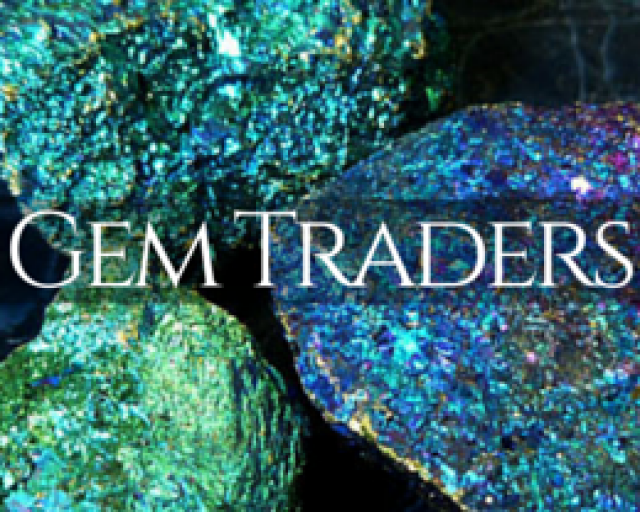No has pujado en esta subasta.
ARGONITE CLUSTER SPECIMEN 1436.40 CARATS RT 1351
- SKU
- Dimensiones (mm)
- x x mm
- Peso (cts)
- Tipo
- Specimen
- Colores
-
This is a natural specimen from Morocco showing strong cluster of crystal development.
Size 79x56x39 mm app
Aragonite occurs in two distinct places Spain and Morocco. This crystal cluster is from a pocket in a Moroccan lava bed, where it formed at high pressure and relatively low temperature. At surface conditions, aragonite is actually metastable, and heating it to 400°C will make it revert to calcite. The other point of interest about these crystals is that they are multiple twins that make these pseudo-hexagons. Single aragonite crystals are shaped more like tablets or prisms.
Aragonite is calcium carbonate with the same chemical formula as calcite, but its carbonate ions are packed differently. That is, aragonite and calcite are polymorphs of calcium carbonate. It is harder than calcite (3.5 to 4, rather than 3, on the Mohs scale) and somewhat denser, but like calcite it responds to weak acid by vigorous bubbling. You may pronounce it a-RAG-onite or AR-agonite, though the majority of American geologists use the first pronunciation. It is named for Aragon, in Spain, where notable crystals occur.
- SKU
- Dimensiones (mm)
- x x mm
- Peso (cts)
- Tipo
- Specimen
- Colores
-
This is a natural specimen from Morocco showing strong cluster of crystal development.
Size 79x56x39 mm app
Aragonite occurs in two distinct places Spain and Morocco. This crystal cluster is from a pocket in a Moroccan lava bed, where it formed at high pressure and relatively low temperature. At surface conditions, aragonite is actually metastable, and heating it to 400°C will make it revert to calcite. The other point of interest about these crystals is that they are multiple twins that make these pseudo-hexagons. Single aragonite crystals are shaped more like tablets or prisms.
Aragonite is calcium carbonate with the same chemical formula as calcite, but its carbonate ions are packed differently. That is, aragonite and calcite are polymorphs of calcium carbonate. It is harder than calcite (3.5 to 4, rather than 3, on the Mohs scale) and somewhat denser, but like calcite it responds to weak acid by vigorous bubbling. You may pronounce it a-RAG-onite or AR-agonite, though the majority of American geologists use the first pronunciation. It is named for Aragon, in Spain, where notable crystals occur.
| Proveedor de envío | Envío a Australia | Envíos al resto del mundo |
|---|---|---|
| FedEx | $12.00 / 3 días días | $39.00 / 10 días días |
|
Australia
FedEx tiene descuento a $12.00 en pedidos con 2 o más artículos
Resto del mundo
FedEx tiene descuento a $39.00 en pedidos con 2 o más artículos
|
||
| Registered Shipping | $9.00 / 7 días días | $16.00 / 21 días días |
|
Australia
Registered Shipping tiene descuento a $9.00 en pedidos con 2 o más artículos
Resto del mundo
Registered Shipping tiene descuento a $16.00 en pedidos con 2 o más artículos
|
||

-
 Positivo
PositivoJust Right! Thank You!
-
 Positivo
PositivoReceived the pearls today and they are exactly as described.This seller responded very quickly and was a pleasure to buy from!Will buy more in future!Thank you.
-
 Positivo
PositivoI have no idea what these are for but I saw them in a dream the night before I bought them
-
 Positivo
PositivoExcellent as usual, thank you kindly
-
 Positivo
PositivoSuper-fast delivery! Thanks.
-
 Positivo
PositivoA beautiful dress piece. Thank you.
¿Por qué los usuarios se superan a sí mismos?
Cuando se realiza una oferta, esta es la cantidad máxima que un usuario está dispuesto a ofertar por el producto. Luego, nuestro sistema ofertará automáticamente en nombre de ese usuario, aumentando gradualmente la oferta para mantener su posición como el mejor postor, hasta el máximo especificado.
Cuando hay un ícono que indica "Oferta automática", significa que nuestro sistema está realizando ofertas activamente para el usuario en función de su oferta máxima. Esto puede parecer como si los usuarios se estuvieran superando a sí mismos, pero es simplemente el resultado de que el sistema actualiza la oferta para reflejar el límite máximo de los usuarios.















